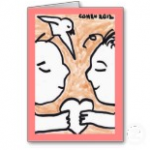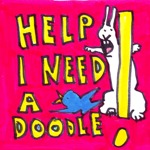What does a hug feel like? It is a simple thing to do – the instructions are short: Person A and Person B embrace and then separate – duration varies, sighs are optional. What could be simpler? But this action belies a richness of emotion. The complexity of expression a hug can convey is enormous, human and irreplaceable.
The hug is an extraordinarily efficient means of communication. We hug for lots of reasons: pride, affection, belonging, friendship, comfort and sympathy. We hug because we missed someone. We hug because we will miss someone. We hug because we love – and the amazing thing is that in every hug those intangibles are clearly communicated.
Businesses should communicate so well.
We aren’t wired to get emotional about sanitized communications, but business isn’t supposed to be mushy, right? We don’t hug spreadsheets…
So how do we reconcile this? How do we get some clarity and human contact without getting sappy or sentimental?
What about a punch?
Punches, like hugs, can clarify relationships. Think about it.
If someone punches you square in the face it will shake the ambivalence right out of you. You’ll be “in the moment”. It is, as they say, very centering.
Yes, we associate punches with anger and aggression, but a punch is not always evil. A punch in the arm is jovial, a fist-bump is hip and benign, even a little rough-housing amongst kids can be a bonding act. Have you ever seen a coming-of-age flick without a big, cathartic, punch-out scene? It is is a cliche of modern movies.
Even when a punch is meant to harm one could argue that it is a form of overloaded expression – more often the product of an emotional upwelling than malice of forethought. We punch when our system can’t process the information through any other route. We punch because we are imperfect communicators. We punch because we are human and we hate, and we love.
But businesses are supposed to be predictable and unemotional, right? Hmm.
But there are lessons:
Punches and hugs unambiguously communicate a lot in a very short amount of time.
So be clear and concise.
They are hard to fake: You can fake the aftermath, the reaction, but if you pull the punch or you don’t return the hug the person on the receiving end will know it instantly.
So be authentic.
Hugs and punches differ, however, in predictability: You can pull out your calendar and name a bunch of dates on which you can say, with great certainty, that you will be hugged. Thanksgiving, Christmas, your birthday, etc. – the hugs are coming! Yet that will not diminish by one iota the spontaneity, the genuine emotion of any single one of those future embraces. On the other hand, unless you are a boxer, any punches that you might receive this year are likely to be shockingly unexpected.
So put the positive messages on a regular schedule, keep the close, interactive communication on a high rotation. Make statements of care something your customers can expect.
But isn’t this a risky approach for a business?
To hug a friend is only risky if you don’t mean it. To hug a stranger is always risky (you might get punched) – it puts a lot on the line and demands a reaction that cannot be controlled – but if you can hug a stranger and mean it the outcome can be amazing.
Humanness, authenticity, spontaneity, risk, emotion, shock and love – business-think eschews these messy ideas, it is more business-like to scrub away the emotion, focus on the data, the specs, the ROI and the bottom line. But we’re human. We crave connection and reassurance, comfort and belonging, and the occasional jolt of clarity. What do businesses crave? They crave loyalty. Loyalty, after all, is good for the bottom line, but where does loyalty come from? Loyalty is emotional, by definition. It doesn’t come without trust, but there is no trust without an emotional connection.
Businesses often won’t risk what is necessary to make us feel that connection. Businesses need to risk some punches if they want to win some hugs. Communicate with authenticity, be genuine, be human, and take chances. Accept the idea that no communication connects for everyone – not everybody wants to hug you, but your time, your energy, your thoughts, and your words are better spent meeting, cultivating and embracing the ones that do.











Interviewed on ThriveAMERICA
David Cohen interviewed on ThriveAMERICA
I just wanted to give a shout out over to Brent Brooks at Blank Stage Productions and thank him for having me as a guest on their video blog: ThriveAMERICA. As an interviewer Brent was great – friendly, prepared and he went out of his way to make me feel comfortable as a guest. Thanks Brent!
The interview is about a half hour long, but is broken up into 10 minute sections. I hope you’ll take the time to check it out as we discuss the three Rs of branding and the three Cs of communication. Brent even got me talking about some business mistakes I’ve made and some ideas for the future. I hope you enjoy it and if you do, please remember to click on the stars to rank the video.
Thanks!
David Cohen discusses branding on ThriveAMERICA